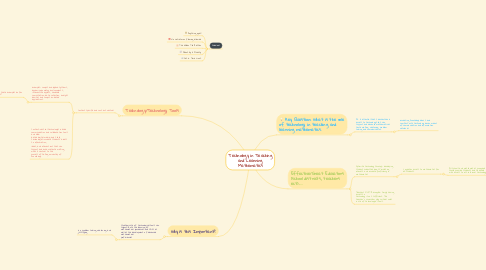
1. Guidelines
1.1. Anything goes!
1.2. No criticism or flaming allowed
1.3. The Wilder The Better
1.4. Quantity is Quality
1.5. Set a Time Limit
2. Technology/Technology Tools
2.1. Content specific and content neutral
2.1.1. examples: computer algebra systems, dynamic geometry environments, interactive applets, handheld computation, data collection, analysis devices and computer-based applications.
2.1.1.1. What do these examples do for students?
2.1.1.1.1. These technologies support students in exploring and identifying mathematical concepts and relationships.
2.1.2. Content-neutral technologies include communication and collaboration tools and Web- based digital media, and these technologies increase students’ access to information, ideas, and interactions that can support and enhance sense making, which is central to the process of taking ownership of knowledge.
3. Why is this Important?
3.1. strategic use of technological tools can support both the learning of mathematical procedures and skills as well as the development of advanced mathematical proficiencies
3.1.1. ex: problem solving, reasoning, and justifying
4. Key Question: What is the role of technology in teaching and learning mathematics.
4.1. It is essential that teachers have access to technology that can support and advance mathematical: sense making, reasoning, problem solving and communication.
4.1.1. increasing knowledge about and comfort with technology-driven means of communication and information retrieval.
5. Effective/Great Educators (school districts, teachers ect).....
5.1. Optimize technology through: developing student understanding, stimulating interest and increase proficiency in mathematics
5.1.1. = greater access to mathematics for all students.
5.1.1.1. All schools and mathematics programs should provide students and teachers with access to instructional technology
5.1.1.1.1. including: classroom hardware, handheld and lab-based devices with mathematical software and applications, and Web-based resources—together with adequate training to ensure its effective use.
5.1.1.1.2. Programs in teacher education and professional development must continually update practitioners’ knowledge of technology and its application to support learning.

